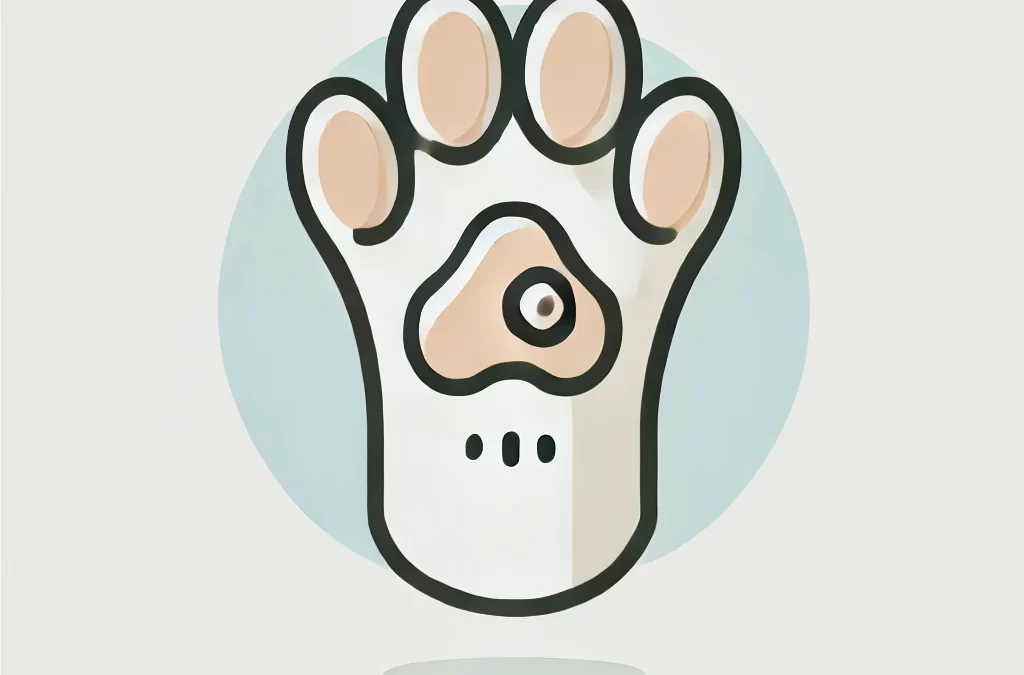When your dog starts limping or licking its paws excessively, the culprit might be an interdigital cyst—a condition both common and concerning. While these cysts are typically benign, their appearance can sometimes lead pet owners to question: could this be a sign of something more sinister, like cancer? Let’s delve into this topic with fresh eyes, exploring the distinctions, potential connections, and how to best approach these issues for your dog’s well-being.
What Are Interdigital Cysts?
Interdigital cysts, also known as furuncles, are fluid-filled lumps that form between a dog’s toes. They result from inflammation of the hair follicles in the interdigital spaces, often caused by:
- Trauma: Cuts or scrapes on the paws.
- Allergies: Environmental or food allergies leading to excessive licking.
- Genetic Predispositions: Certain breeds, such as Bulldogs and Labrador Retrievers, are more prone.
- Foreign Bodies: Splinters or debris embedding into the skin.
While interdigital cysts are usually non-cancerous, their recurring nature can cause discomfort, infection, and even lameness.
Can Interdigital Cysts Be Linked to Cancer?
The short answer: rarely, but not entirely impossible.
Most interdigital cysts are benign and not related to cancer. However, chronic inflammation caused by persistent cysts can potentially create an environment conducive to more severe conditions over time. This phenomenon, known as chronic inflammation-driven carcinogenesis, highlights how prolonged irritation may increase the risk of malignant changes in tissues.
Moreover, in very rare cases, lumps initially identified as cysts might actually be something more serious, such as:
- Squamous Cell Carcinoma (SCC): A type of skin cancer that can develop in the paw pads or between toes.
- Mast Cell Tumors (MCTs): These tumors, though commonly found elsewhere, can occasionally appear in unusual locations like the paws.
- Mélanome: Malignant melanomas may also manifest near the paw pads and resemble cyst-like growths.
How to Differentiate Between Cysts and Cancer
A proper diagnosis is crucial. Here’s what to watch for:
- Shape and Texture: Cysts are usually soft, round, and filled with fluid. Tumors may feel hard and irregular.
- Taux de croissance: Benign cysts grow slowly, while malignant tumors often grow rapidly.
- Color and Ulceration: Cancerous growths might be discolored, ulcerated, or bleed spontaneously.
- Réponse au traitement: Cysts often respond to antibiotics, anti-inflammatory medications, or drainage, whereas cancerous growths do not.
Veterinarians may recommend diagnostic tests like fine-needle aspiration (FNA) or biopsy to confirm whether a growth is benign or malignant.
Holistic and Preventative Care for Paw Health
Even if a cyst is non-cancerous, prevention and holistic care can improve your dog’s quality of life:
- Paw Hygiene: Regular cleaning reduces the risk of foreign objects embedding in your dog’s paws.
- Adaptations diététiques: Omega-3 fatty acids and anti-inflammatory supplements can reduce inflammation and promote skin health.
- Natural Remedies: Products like TCMVET Baituxiao or turmeric-based creams may help reduce inflammation in recurrent cysts.
- Moderated Exercise: For active dogs prone to trauma, consider softer terrains for walks to avoid cuts and abrasions.
When Surgery or Advanced Treatment is Needed
For persistent or complicated cysts, surgery might be required to remove the affected tissue. In rare cases of suspected malignancy, amputation of the affected toe may be necessary to prevent the spread of cancer. Advanced therapies like laser surgery or cryotherapy can also provide non-invasive solutions for certain cases.
The Takeaway: Knowledge is Power
Interdigital cysts, while common and mostly benign, should never be ignored. Staying vigilant, consulting your veterinarian, and adopting a proactive approach can make all the difference in ensuring your dog’s paw health. And remember, even if the specter of cancer arises, early detection and modern treatments offer promising outcomes.
Our furry friends rely on us for care and protection. By understanding the nuances of conditions like interdigital cysts, we can give them the best chance at a long, healthy, and happy life.


